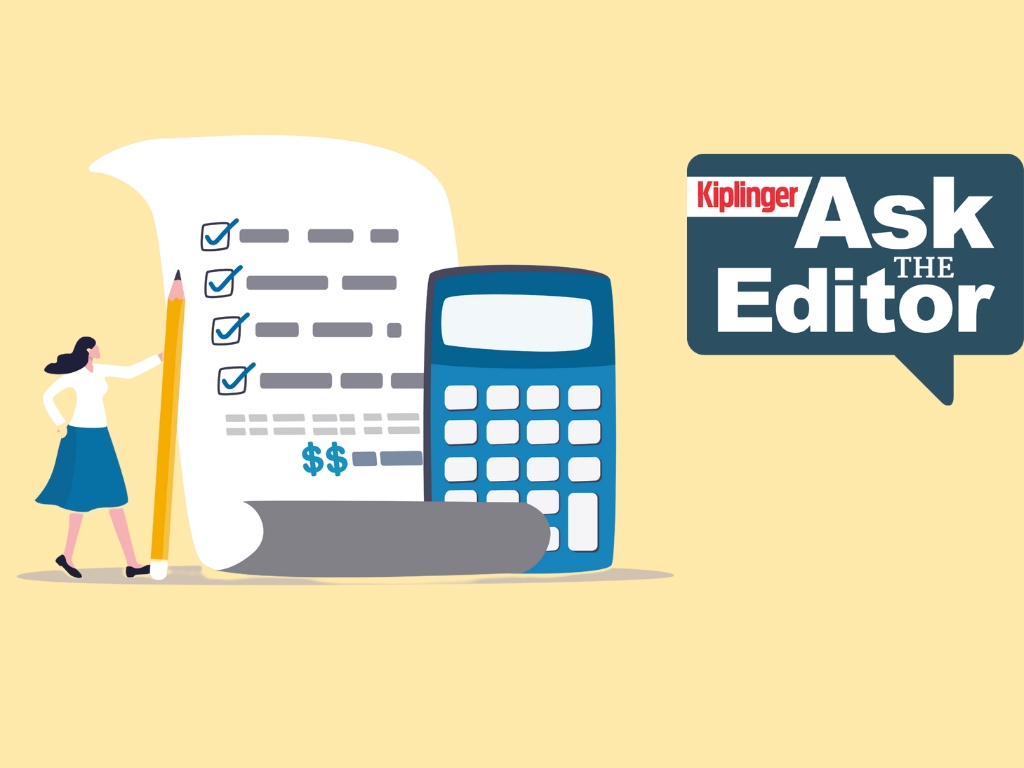5 Strategies to Help You Hold on to More of Your Money in Retirement
Some savvy retirees could pay 0% in capital gains taxes if they manage their incomes right. Others could avoid paying hidden Medicare taxes with the help of Roth IRA conversions. It’s all about tax planning.


Preparing for retirement requires a lot of adapting — not just emotionally, but financially. The closer you get, the more important it becomes to look at your budget, your asset allocation and where your income will come from when you’re creating your own paycheck.
It’s also critical to make tax efficiency a priority in your planning.
Taxes can take a giant bite out of retirement income year after year. And yet, even people who have done a great job of investing and saving for retirement tend to overlook the tax planning that’s necessary to hold on to more of their nest egg.
That may be because many people have been told their taxes are destined to go down in retirement. If you’re spending less, you’ll require less income, which means your taxes will be lower, right? Not always. Many people spend the same or more in retirement — at least for the first few years, when they may be doing more traveling, spending time with family and friends, or taking up new hobbies. Also, required minimum distributions for many people can force distributions above and beyond their spending levels, which can increase taxable income and create a tax nightmare.
What can you do to soften the blow? Here are a few strategies to consider:

Keep an eye on income to limit taxes on capital gains
Depending on your income, you might not have to pay any federal income taxes on qualified dividends or gains from selling stocks, mutual funds or other capital assets you’ve owned for more than a year. In 2020, married couples who file jointly can qualify for the 0% long-term capital gains tax rate if their taxable income is $80,000 or less. For single filers, the 2020 threshold is $40,000.
How can proactive tax planning help you land in a lower tax bracket during those early retirement years? One move might be to delay taking your Social Security benefits for a few years while you live off your capital gains. And if you need additional income during those years, you might choose to withdraw the funds from a Roth account, since that won’t increase your taxable income.

Move money from a traditional IRA to a Roth
If you’ve been putting most of your savings into a tax-deferred investment account, converting all or a sizable chunk of those funds to a Roth could help defuse the ticking tax time bomb that’s waiting for you in retirement. This is especially true if you expect to have a long retirement or if you believe taxes are bound to be higher in the future. The tax bracket overhaul put in place by the Tax Cuts and Jobs Act is set to expire at the end of 2025, bumping up taxes to where they were in 2017. Most experts are predicting they could go even higher, given that the national debt is now at $25 trillion and growing, and Social Security, Medicaid and Medicare will likely need funding help in the future.
Finding the optimal Roth conversion strategy for your particular set of circumstances can potentially result in hundreds of thousands of dollars in tax savings over the course of your retirement. Once your money is in a Roth, it can continue to grow without growing your tax bill. (Your adviser should be able to fill you in on all the rules that apply to a Roth conversion.)

Plan for the hidden Medicare tax
Here’s another place where doing a Roth conversion now could help mitigate taxes in retirement. Many people don’t know this, but individuals and couples with higher incomes may be required to pay an income-related monthly adjustment amount (IRMAA) in addition to their Medicare Part B and Part D premiums. The Social Security Administration (SSA) determines whether you’re subject to these surcharges based on the income you reported on your tax return two years ago. (So, for example, in 2020, the SSA will look at your 2018 return.)
Currently, there are six income tiers that determine both surcharges. Individuals with modified adjusted gross income (MAGI) of $87,000 or less and married couples with a joint MAGI of $174,000 or less are in the first tier; they aren’t subject to IRMAA surcharges in 2020. After that, the extra costs kick in — and they increase at each income tier. That means affluent retirees who keep their money in tax-deferred accounts for years, until they’re required to take minimum distributions at age 72, could end up paying thousands more for Medicare coverage every year. Only careful planning can reduce that unexpected tax bill.

Take another look at your legacy
If leaving a legacy is a priority for you, you should know that the new SECURE Act now forces non-spouse beneficiaries (with some exceptions) to take a full payout from an inherited IRA within 10 years of the original account holder’s death. The income from these RMDs will go on top of those beneficiaries’ existing income, potentially pushing them into a higher tax bracket. And if they forget or fail to distribute the IRA within 10 years, there is a 50% penalty on top of the income taxes due.
Again, moving the money to a Roth may be appropriate. Your beneficiaries will be required to take RMDs from an inherited Roth IRA — and pay a penalty if they don’t — but they won’t have to pay taxes on those withdrawals.

Take care of your surviving spouse
When one spouse dies, the survivor’s tax status changes to single filer. That means the widow or widower will face a lower income threshold for calculating income taxes, whether his or her Social Security benefits will be taxed and whether an IRMAA will affect future Medicare premiums. It’s important to keep the surviving spouse’s filing status in mind when making your income plan. A Roth can provide tax-free income. So can life insurance. It’s not atypical to see taxes increase 40%-60% just from losing a spouse, while income usually decreases due to losing a Social Security check.
It’s easy to become so focused on saving on taxes right now that you lose sight of the future consequences. A professional analysis of your overall financial plan can help put things in perspective and can allow you to develop strategies that will make sense with respect to your needs and objectives now and in retirement.
Written by Troy Sharpe, the founder and CEO of Oak Harvest Financial Group (www.oakharvestfg.com). He earned his bachelor's degree in finance from Florida State University and completed his Certified Financial Planning certification at Rice University. He is a Registered Financial Consultant and host of "The Retirement Income Show" on KTRH 740AM.
Kim Franke-Folstad contributed to this article.
Appearances on Kiplinger.com were obtained through a paid PR program.
Profit and prosper with the best of Kiplinger's advice on investing, taxes, retirement, personal finance and much more. Delivered daily. Enter your email in the box and click Sign Me Up.

Troy Sharpe is the founder and CEO of Texas-based Oak Harvest Financial Group. In 2023, Investopedia named Troy a top 100 adviser in the country. He holds a Series 65 license as well as a Texas life insurance license. Troy earned his bachelor’s degree in finance from Florida State University and completed his Certified Financial Planning certification at Rice University. He completed his Certified Private Wealth Advisor coursework through the Yale School of Management.
-
 Nasdaq Leads as Tech Stages Late-Week Comeback: Stock Market Today
Nasdaq Leads as Tech Stages Late-Week Comeback: Stock Market TodayOracle stock boosted the tech sector on Friday after the company became co-owner of TikTok's U.S. operations.
-
 Disney’s Risky Acceptance of AI Videos
Disney’s Risky Acceptance of AI VideosThe Kiplinger Letter Disney will let fans run wild with AI-generated videos of its top characters. The move highlights the uneasy partnership between AI companies and Hollywood.
-
 Ask the Editor: Itemized Deductions
Ask the Editor: Itemized DeductionsAsk the Editor In this week's Ask the Editor Q&A, Joy Taylor answers questions on itemized deductions claimed on Schedule A of Form 1040
-
 3 Major Changes Investors Must Prepare for in 2026
3 Major Changes Investors Must Prepare for in 2026A possible stock market bubble. Trump accounts. Tokenized stocks. These are just three developments investors need to be aware of in the coming months.
-
 Standard Deduction 2026 Amounts Are Here
Standard Deduction 2026 Amounts Are HereTax Breaks What is the standard deduction for your filing status in 2026?
-
 Government Shutdown Puts IPO Resurgence at Risk
Government Shutdown Puts IPO Resurgence at RiskThe IPO market has been sizzling in recent months, but the government shutdown threatens to put a short-term halt to public offerings. Here's why.
-
 Three Popular Tax Breaks Are Gone for Good in 2026
Three Popular Tax Breaks Are Gone for Good in 2026Tax Breaks Here's a list of federal tax deductions and credits that you can't claim in the 2026 tax year. High-income earners could also get hit by a 'surprise' tax bill.
-
 Mutual Funds Are About to Get the ETF Treatment. Here's What It Means for Investors
Mutual Funds Are About to Get the ETF Treatment. Here's What It Means for InvestorsThe SEC is expected to decide soon whether mutual funds from dozens of providers can be offered as ETF share classes.
-
 Five Ways Trump’s 2025 Tax Bill Could Boost Your Tax Refund (or Shrink It)
Five Ways Trump’s 2025 Tax Bill Could Boost Your Tax Refund (or Shrink It)Tax Refunds The tax code is changing again, and if you’re filing for 2025, Trump’s ‘big beautiful’ bill could mean a bigger refund, a smaller one or something in between next year. Here are five ways the new law could impact your bottom line.
-
 New SALT Deduction Could Put Thousands Back in California Homeowners’ Pockets
New SALT Deduction Could Put Thousands Back in California Homeowners’ PocketsTax Breaks The federal state and local sales tax (SALT) deduction cap is higher this year, and could translate into bigger savings for Golden State homeowners.
-
 Key 2025 Tax Changes for Parents in Trump's Megabill
Key 2025 Tax Changes for Parents in Trump's MegabillTax Changes Are you a parent? The so-called ‘One Big Beautiful Bill’ (OBBB) impacts several key tax incentives that can affect your family this year and beyond.
